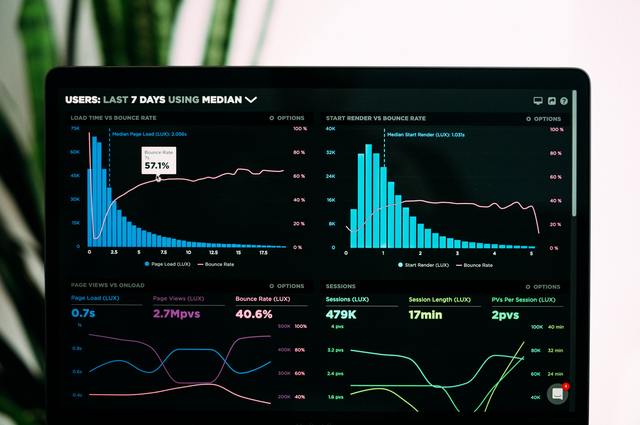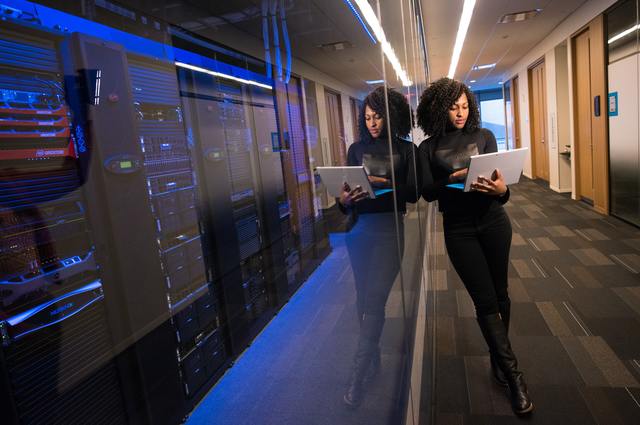AI adoption is skyrocketing. About 86% of companies say it will soon become mainstream technology – and 67% accelerated their AI strategy in 2021. Statistics like these suggest companies that don’t embrace the AI revolution may soon be outpaced by the competition.
Predictive analytics is one of the most practical ways to use AI to boost your conversion rates. We’ve put together this article to give you an overview of how it’s used and how it might be used in the future.
An overview of predictive analytics
Predictive analytics is a sub-type of data analytics that uses data to answer questions about what could happen in the future.
Suppose a company knows its average conversion rates for a specific customer segment. In that case, it can use that data to predict how likely a newly discovered lead fits. In that case, a segment becomes a paying customer.
Companies can use predictive analytics to predict both the near and distant future. For example, it can predict a manufacturing machine malfunction or analyze what a market might look like a year from now.
Why worry about predictive analytics at all?
If you can predict the future with some level of certainty, then you can take actions now that position you to excel when the time arrives.
How predictive analytics work
There are a few different ways a company can use the data it has to predict future events. One option is to do the work manually by performing a regression analysis or a multiple linear regression.
But many companies are starting to use machine-learning algorithms to fuel their predictive analytics. This is where AI comes in. A business can use AI-backed algorithms to make more powerful predictions – predictions that they might not find if they were performing the calculations manually.
Industries that use predictive analytics
Many industries are already using AI to unlock the power of predictive analytics, and the number of companies doing this will only grow. Here are three examples of how it’s already shaping the future of business.
Finance
Maintaining a healthy cash flow is essential to a company’s long-term success. Financial businesses use predictive analytics to gather the insight needed to achieve this.
With the right tools, a company can use data from previous financial statements and the broader industry to predict what its sales, revenue, and profits will look like in the future. They can then use that information to make decisions that prepare them for the most likely future outcomes.
Manufacturing
In manufacturing, uptime is critical. The more consistently a manufacturing facility operates at maximum capacity, the more money it makes. Predictive analytics help manufacturing companies avoid downtime that interrupts productivity.
Companies can use data from previous machine malfunctions to predict when future ones will occur. Then, when they’re alerted to an impending malfunction, they can fix the problem before it happens, thereby avoiding the downtime of a malfunction entirely.
SaaS
SaaS providers are also using predictive analytics to improve business outcomes. The most impactful usage is for reducing customer churn.
A SaaS company can feed information about customer demographics, product purchases, and more to determine how likely it will lose an existing customer.
If they identify that a customer is likely to leave them soon, they can take preventative action by reaching out or highlighting some new use cases for their software.

Examples of predictive analytics
It’s clear today that leveraging predictive analytics with AI is a powerful way to unlock your company’s potential. But putting that into practice can feel tough if you’re not well-versed in the space.
That’s why we included eight more examples of how you might be able to put predictive analytics into practice at your company.
Conversational AI
Conversational AI can be an extremely effective way to provide your customers with a superior experience. It automates answers to common customer questions, which frees up your support agents to focus on resolving more complex or pressing issues.
Conversational AI chatbots gather data about what questions customers have asked in the past and the responses that left them feeling satisfied. They then automatically start learning how to use that information to answer customers’ questions more accurately.
Product recommendations
Perhaps the most visual representation of predictive analytics in practice is product recommendations. You see these now on practically every merchant website.
Product recommendation algorithms essentially use what’s known about a customer (such as demographics or items left in shopping cart) to predict additional products they might like.
Using AI-fueled product recommendations can be an extremely effective way to boost your company’s bottom line.
Risk assessment
Before a company can make a big decision, it needs to analyze the risk of choosing each available option accurately. Predictive analytics makes this easier by offering companies a complete assessment of the risks involved with each potential decision and how those would impact the business financially.
Determining staffing needs
Restaurants, bars, and other location-based businesses are also starting to hop aboard the predictive analytics train. These companies can use AI-based predictive analytics to determine the optimal number of staff members to have worked at any given time.
This is important because staffing numbers need to be as accurate as possible. A company risks losing money by scheduling too many staff members or providing a poor customer experience when they don’t schedule enough staff.
Early detection of allergic reactions
Predictive analytics is even becoming mainstream in the medical field. Harvard recently came out with a product that uses the power of AI to predict when someone is about to experience an allergic reaction. A wearable device automatically administers a shot of epinephrine to save the person’s life.
Real estate sales
Real estate companies and agents are also using predictive analytics in interesting ways. Agents can identify homeowners that may sell their homes soon by looking at changes in census data. This gives them the chance to reach out with targeted marketing before the house goes on the market.
Predictive analytics also helps companies like Zillow accurately project the fair market value. This helps buyers and sellers optimize their transactions.
Supply chain management
For many businesses, the supply chain is everything. But it can be a complex thing to manage – let alone optimize. AI-powered predictive analytics is making this easier to do.
There are programs companies can use to track and analyze data at every stage of the supply chain. They can then use that data to figure out their most significant opportunities for rovement are.
Food Delivery
Food delivery apps like GrubHub and Uber Eats also use predictive analytics to deliver better experiences to customers. They send out highly personalized ads to individual users based on what they know about a user’s ordering habits.
For example, DoorDash will base the ads that it sends on the time of day that a person usually orders, how long it will take for the restaurant to prep their food, and even whether there are any high profile weather or sporting events going on.
How predictive analytics will impact conversion rates in the future
It’s difficult to foresee what innovations will appear in the field of predictive analytics as we move into the future. But it’s fairly easy to see where all of this is going on a macro scale.
Predictive analytics already provide huge value to companies across many industries by boosting conversion rates and improving bottom lines. As this technology becomes more refined and AI becomes more powerful, its insights will only become more impactful. And as companies can get more value out of predictive analytics, they’re going to rely on it more often. Companies that refuse to use predictive analytics will likely fall behind their competition at a certain point.
If your business isn’t using predictive analytics yet, now could be the perfect time to start. You don’t want to wait to leverage this tech until you fall behind the competition.

LeadLander gives you the data you need to harness the power of predictive analytics
The key to getting as much out of predictive analytics as possible is having consistent access to high-quality data. The insights you gain from predictive analytics will only be as accurate and comprehensive as the data you feed it.
That’s why you should consider trying out website visitor tracking software from LeadLander. It provides you with a steady stream of information about who’s visiting your website, what they’re doing on it, and how they got to it.
You can use this information in algorithms that help you more accurately predict potential outcomes. It could be just what you need to establish an edge and stand out from the competition.
So why wait? You can sign up for a risk-free 14-day trial of LeadLander today.


